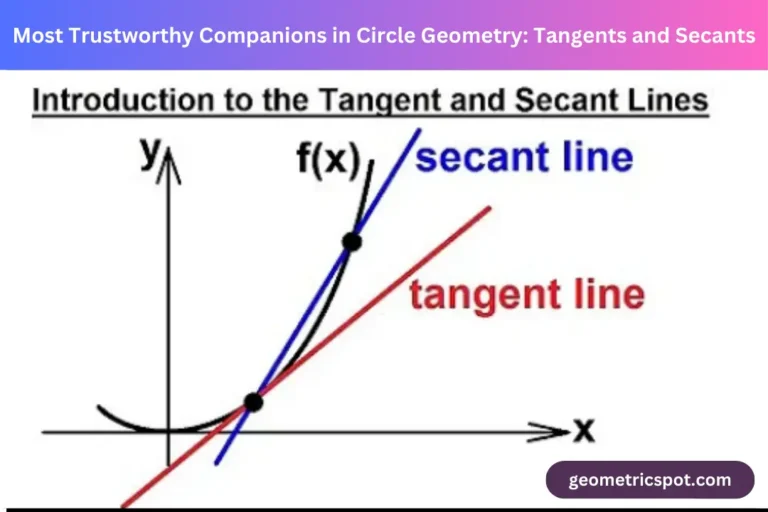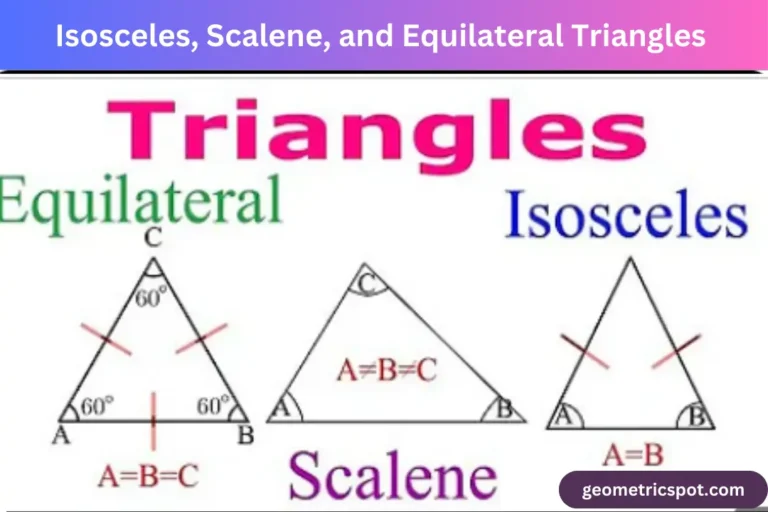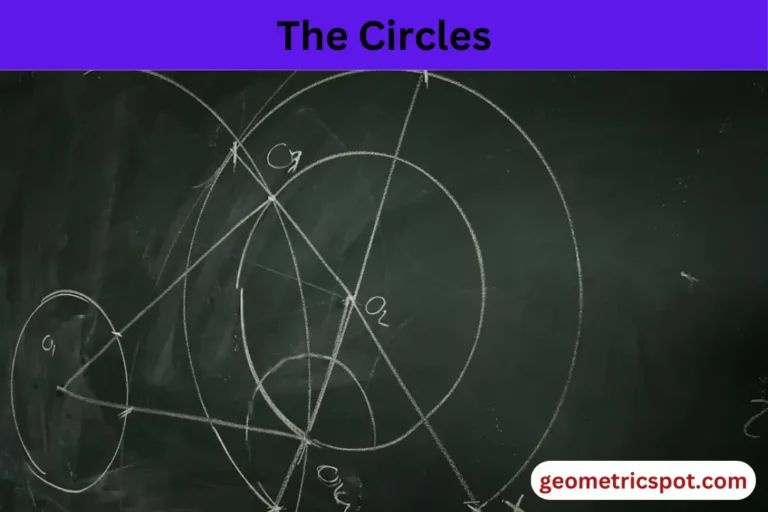What are the Types Of Angles In Geometry?
Welcome to the world of angles. Angles are everywhere. From the shape of your house to the slices of pizza you are eating. But understanding angles is a fundamental step to understand the geometry.
First thing to clear your concepts about what is an angle? What are the types of angles in geometry? There are multiple types of angles in geometry but we solely focus on 10 major types of angles. So, let’s begin the theory of angles.
What is an Angle?
An angle is a diagram that is made by joining two rays or lines with a common endpoint. These rays are free lines and can be combined or joined together in different ways to form different types of angles in geometry.
The basic types of angles in geometry are:
- Acute Angle
- Obtuse Angle
- Right Angle
- Straight Angle
- Reflex Angle
- Complete Angle
Measurement Of An Angle
The symbol that is used to write the angle or represents is ∠. Angles measured in degrees. You can measure them by using a protractor or D from a geometry box.
Example;
60° represents that the angle is 60 degrees.
The diagram given below describes how to measure an angle by a protractor.
Different Parts Of Angles
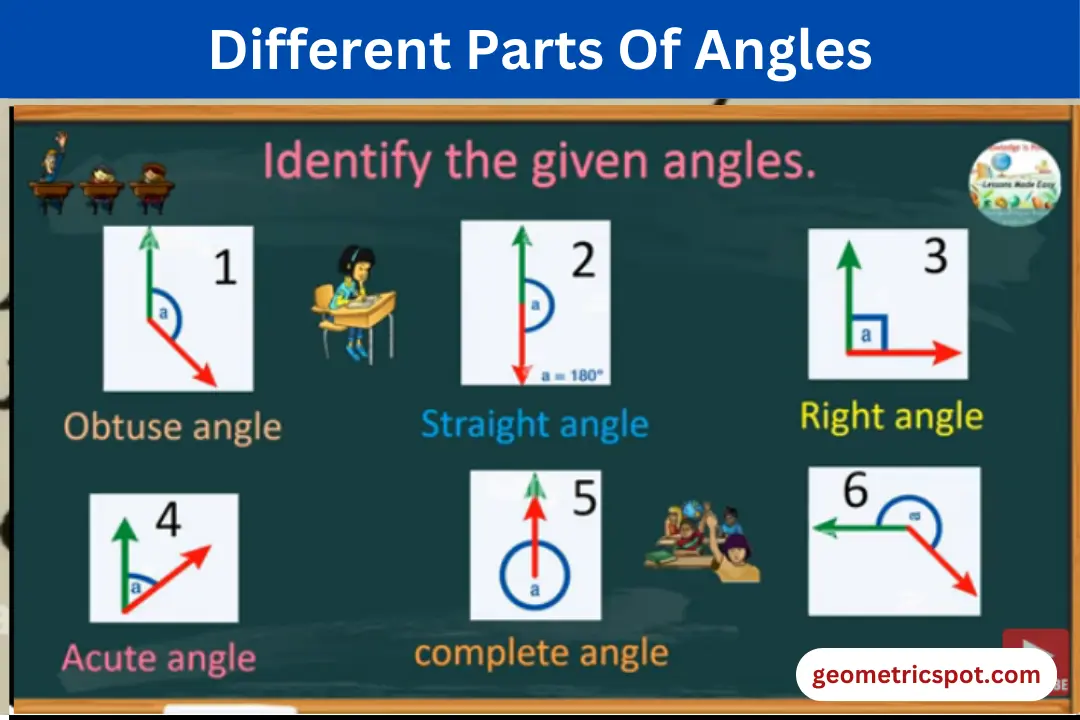
Vertex:
In angles, vertex is a common point where lines or rays meet together. Or we can say, it is a corner of an angle where two rays joined.
Side:
The free straight lines or rays are called sides of an angle. There are two types of sides.
Initial Side: Initial side which is also known as the reference side. The straight line which is used to draw an angle.
Terminal Side: It is the line which is used to measure an angle.
Arms:
When two sides or straight lines formed and meet at a common point is called an arm.
Degrees:
It is a unit to measure angles and usually it is represented by symbol °.
Basic Types of Angles In Geometry
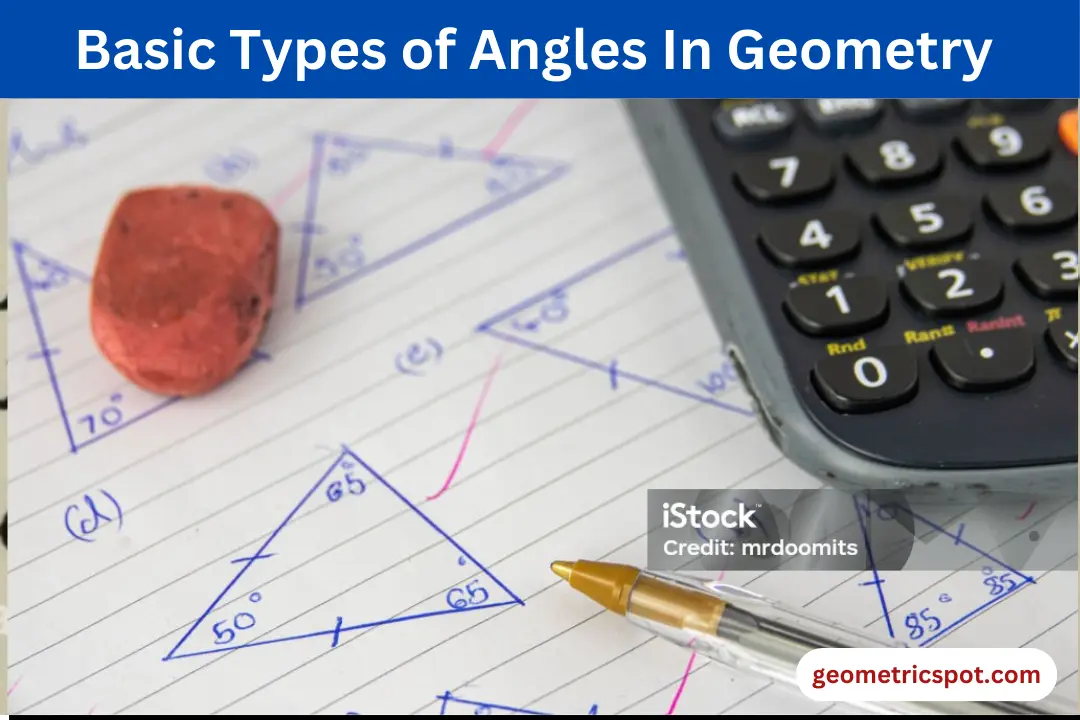
Angles are classified on the basis of their measurements, rotations, magnitude and size. Let’s move towards the 6 basic types of angles.
1. Acute Angle
These angles usually lie between 0° to 90°. It means they are less than 90°. In other words, we can say that an angle that is smaller than the right angle is just like <30°, <50° etc.
Example:
Just imagine a slice of cake. The sharp and pointy corner where frosting meets the cake, making an acute angle. The figure given below describes an acute angle.
2. Right Angle
The superstars and the perfect angles are right angles. These angles formed an exact 90° straight line. Right angle’s measurement always gives 90 degrees as a result.
Example:
Imagine your course textbooks, the perfect straight corner always explains the right angle.
The figure given below describes a right angle.
3. Obtuse Angle
These angles are exact opposites of acute angles. It is defined as: the angle should be greater than 90° and less than 180°. In other words, the angle must lie between 90 degrees and 180 degrees.
Example:
Just imagine a slice of watermelon– the angle between rind and flesh is mostly an obtuse angle.
The figure given below describes an obtuse angle.
4. Straight Angle
As the name says, straight angle means an exact straight line. A straight angle is an exact measurement of 180° between its arms.
Example:
just imagine a fully opened door, this flat stretch of the door is a straight angle.
The figure given below describes a straight angle.
5. Reflex Angle
An angle that is more than 180 degrees or lies between 180° and 360° is usually called a reflex angle.
Example:
250° is a reflex angle or imagine a protractor or D from your geometry box. Now, bend your protractor backwards and measure the angle.
The figure given below describes a reflex angle.
6. Complete Angle
As the name says, complete angles means complete circle. It can be measured as a full 360°. In other words, we can say: a complete angle is a complete rotation which measures 360 degrees. When two straight angles combined or four right angles combined together, they make a complete angle.
Example:
Just imagine a spinner in your hands at its full spin. It’s an example of a complete angle. It stops and at the end we will be back at our starting point.
Special types Of Angles in geometry
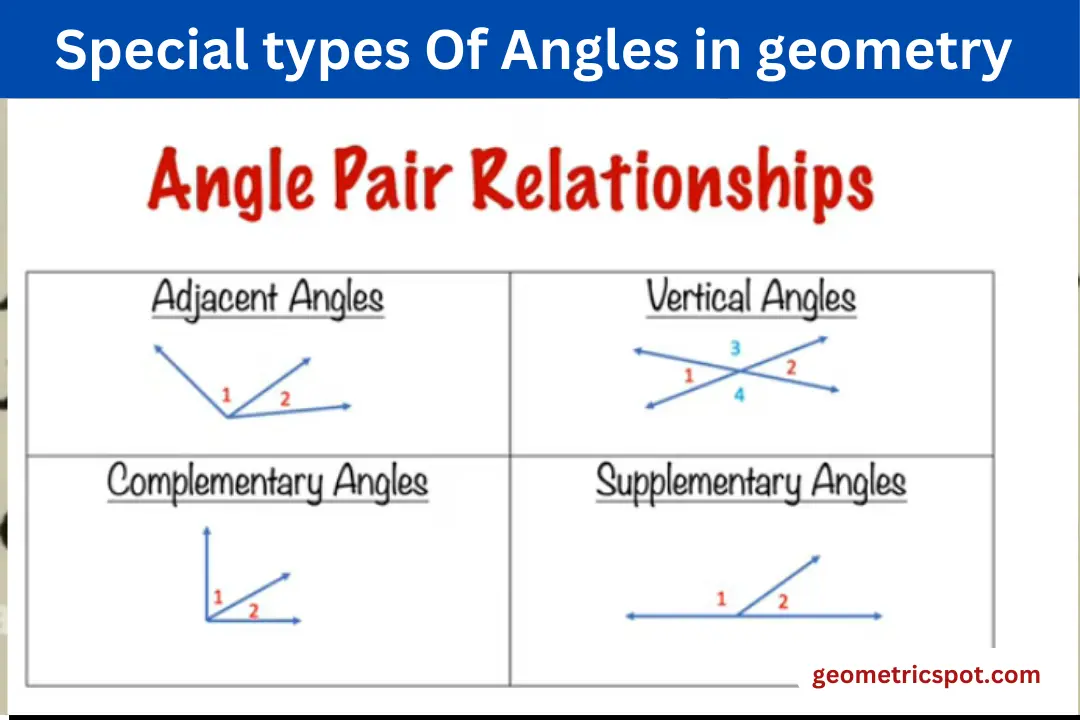
Whenever two or more basic angles are combined together, they form a special angle. These are the special types of angles such as:
- Complementary Angle
- Supplementary Angle
- Adjacent Angle
- Vertically Opposite Angles
- Linear Pair Angles
1. Complementary Angle
When two angles combine or add together and make a 90° angle is called complementary angle or a right angle. In other words, the sum of two angles should be 90° in case of complementary angles.
2. Supplementary Angle
When two angles combine or add together and make a 180° ( straight angle) is called a supplementary angle. In other words, the sum of two angles should be 180° in case of supplementary angles.
3. Adjacent Angle
Those angles which are formed by a combination of any two basic types of angles in geometry that can share a common vertex but no common side. They also lie side-by-side. In other words, we can say when two angles are joined by one common arm and have a common vertex.
4. Vertically Opposite Angles
When two sides or lines intersect each other in such a way that they can create four angles. The opposite ones ( facing each other with the vertex), angle formed on every side of the common vertex is called vertically opposite angle.
5. Linear Pair Angles
It is a combination of pairs of adjacent angles when two lines intersect each other at a common point. For example; ∠1 and ∠4, it shows a linear angle. The angle must be added up to 180°.
Transversal Angles
A side or line that cuts two or more lines at multiple points is usually called a transversal angle. In other words, these angles are measured at the point of intersection such as:
- Interior Angles
- Exterior Angles
Interior Angles
These angles referred to those angles which can be measured within the shape or diagram. In other words, the angles made within the shape are called interior angles.
The figure given below describes an interior angle.
Exterior Angles
These angles referred to those which can be measured outside the shape or diagram. In other words, those angles which are made outside the diagram are called exterior angles.
The figure given below describes an exterior angle.
Angles In Everyday Life
Angles play a crucial role in our daily lives. Understanding them is a vital step towards:
- Construction– Architects use angles to construct any blueprint of a structure. Further, angles are used to design buildings.
- Navigation– Merchants or sailors totally rely on angles to find their exact position and their destination by measuring angles in the sea.
- Sports and Aviation– Understanding the angles helps to hit the goals in basketballs and footballs. Moreover, angles play a vital role in flying jet planes.
Final Words
Congratulations guys! Now, you have viewed the world from different types of angles. Now, you can find the difference between acute or right and supplementary or complementary angles. Geometry Angles aren’t just a topic of mathematics, they’re beyond your thinking. From flying an airplane to making a tower, angles play a vital role in construction, destruction, playing video games or real-life games.
So, whenever you see an angle. Don’t just ignore it, rather observe it. Is it a sharp acute angle or a wide obtuse angle? Practice makes a man perfect. This comprehensive article about what are the types of angles in geometry will help you in exams and general learning. Learning from here and practicing on your own helps to create a strong grip on angles.
Frequently asked questions
What are the types of angles based on the direction of a cycle?
There are two types of angles in geometry based on direction:
Positive angle – Those angles which can be measured clockwise or anticlockwise direction. Positive angles drawn from the positive axis.
Negative angle – Those angles which can only be measured clockwise from the initial point. Positive angles drawn from positive x-axis and negative y-axis.
How many angles based on measurements?
There are a total of 6 angles that depend upon measurements.
- Right angle
- Reflex angle
- Straight angle
- Complete angle
- Acute angle
- Obtuse angle
What is a zero angle?
It is that type of angle that measures 0 degree or radians. It is created when two lines or sides intersect at the same time.

